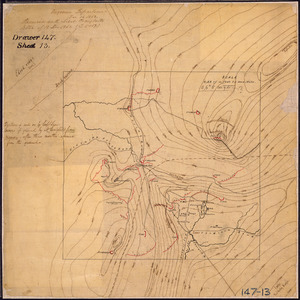Battle of the Cumberland Gap (1862) facts for kids
Quick facts for kids Battle of the Cumberland Gap |
|||||||
|---|---|---|---|---|---|---|---|
| Part of the American Civil War | |||||||
 Cumberland Gap Defenses |
|||||||
|
|||||||
| Belligerents | |||||||
| Commanders and leaders | |||||||
| George W. Morgan | Carter L. Stevenson | ||||||
| Strength | |||||||
| 4 brigades | 3 brigades | ||||||
| Casualties and losses | |||||||
| 0 | unknown | ||||||
The taking of the Cumberland Gap in June 1862 was a victory for the Union Army during the American Civil War. This win allowed Union forces to control the important Cumberland Gap for about three months.
Contents
Why the Cumberland Gap Was Important
At the start of 1862, the Confederate army had a long line of defenses. These stretched across Kentucky, Tennessee, and into Missouri. General Albert Sidney Johnston was in charge of these defenses.
The middle of their defense line was at Bowling Green, Kentucky. One end was at Island No. 10 on the Mississippi River. The other end, at the Cumberland Gap, was held by General Felix Zollicoffer.
Union Successes in the West
In early 1862, the Union Army had many successes in the western part of the war. They won battles at Mill Springs, Fort Henry, and Fort Donelson. They also won at Island No. 10 and Shiloh.
These victories broke through the Confederate defenses in several key places. Both General Zollicoffer and General Johnston were killed in these battles. Zollicoffer died at Mill Springs, and Johnston at Shiloh.
Who Fought at Cumberland Gap
Union Forces
The Union forces were led by Brigadier General George W. Morgan. His group was called the 7th Division of the Army of the Ohio. It included:
- 24th Brigade, led by Brigadier General Samuel P. Carter
- 25th Brigade, led by Brigadier General James G. Spears
- 26th Brigade, led by Colonel John F. DeCourcy
- 27th Brigade, led by Brigadier General Absalom Baird
- Artillery (big guns), led by Captain Jacob T. Foster
Confederate Forces
The Confederate forces were led by Brigadier General Carter L. Stevenson. His group was called Stevenson's Division. It included:
- 2nd Brigade, led by Colonel James Edward Rains
- 3rd Brigade, led by Brigadier General Seth Maxwell Barton
- 5th Brigade, led by Colonel Thomas H. Taylor
The Fight for the Gap
In March 1862, General George W. Morgan sent some of his troops to attack the Cumberland Gap. At this time, Colonel James Edward Rains was defending the gap for the Confederates. General Zollicoffer had been defeated and killed earlier.
The Confederate defenses at the gap were very strong. They seemed too powerful to attack directly. General Carter's Union troops also didn't have enough big guns to match the Confederates.
Morgan's Plan
By April, General Morgan was moving his main force toward the gap. He had four brigades, plus artillery and cavalry. Meanwhile, the Confederates brought in more troops under General Carter L. Stevenson to help defend the gap.
General Morgan suggested a plan to his commander, Major General Don Carlos Buell. He wanted to threaten Chattanooga, Tennessee. This would force the Confederates to move their troops away from the Cumberland Gap.
At the same time, Confederate General Edmund Kirby Smith suggested threatening Nashville, Tennessee. He hoped this would make Union forces move away from the gap. Only Morgan's plan happened.
Union Attack on Chattanooga
A Union group under General James S. Negley attacked Chattanooga on June 7, 1862. This attack was small, but it showed the Union could strike where they wanted. It made General Kirby Smith rethink how safe Stevenson's troops were at the Cumberland Gap.
Marching to the Gap
The Union advance toward the gap was very difficult. The land was rough, especially for moving big guns. General Morgan also had to leave his supply lines behind. His troops had to find food and supplies as they went.
After two weeks of moving through enemy land, Morgan reached the gap. He did this without losing a single soldier. Because of the Union attack on Chattanooga, Kirby Smith ordered Stevenson to pull his troops back to Chattanooga.
On June 18, General Morgan reported to General Buell that he had taken control of the "American Gibraltar." This was a nickname for the Cumberland Gap because it was so strong.
What Happened Next
General Morgan praised his soldiers for how well they acted. They faced many challenges with supplies and rough land. Even though he held a strong defensive spot, Morgan was far from any other Union bases. He had no easy way to get supplies.
Still, his reports to Major General Henry Halleck were very hopeful. As late as August 1862, Morgan said he had no plans to leave the gap. He believed if the enemy attacked, they would be defeated.
General Kirby Smith had been focused on protecting Chattanooga. It wasn't until Confederate General Braxton Bragg invaded Kentucky that Morgan faced a serious threat. Morgan was forced to leave the gap in September 1862. However, he managed to lead his troops safely through enemy territory.
The Cumberland Gap stayed under Confederate control until Major General Ambrose Burnside took it back in 1863.

